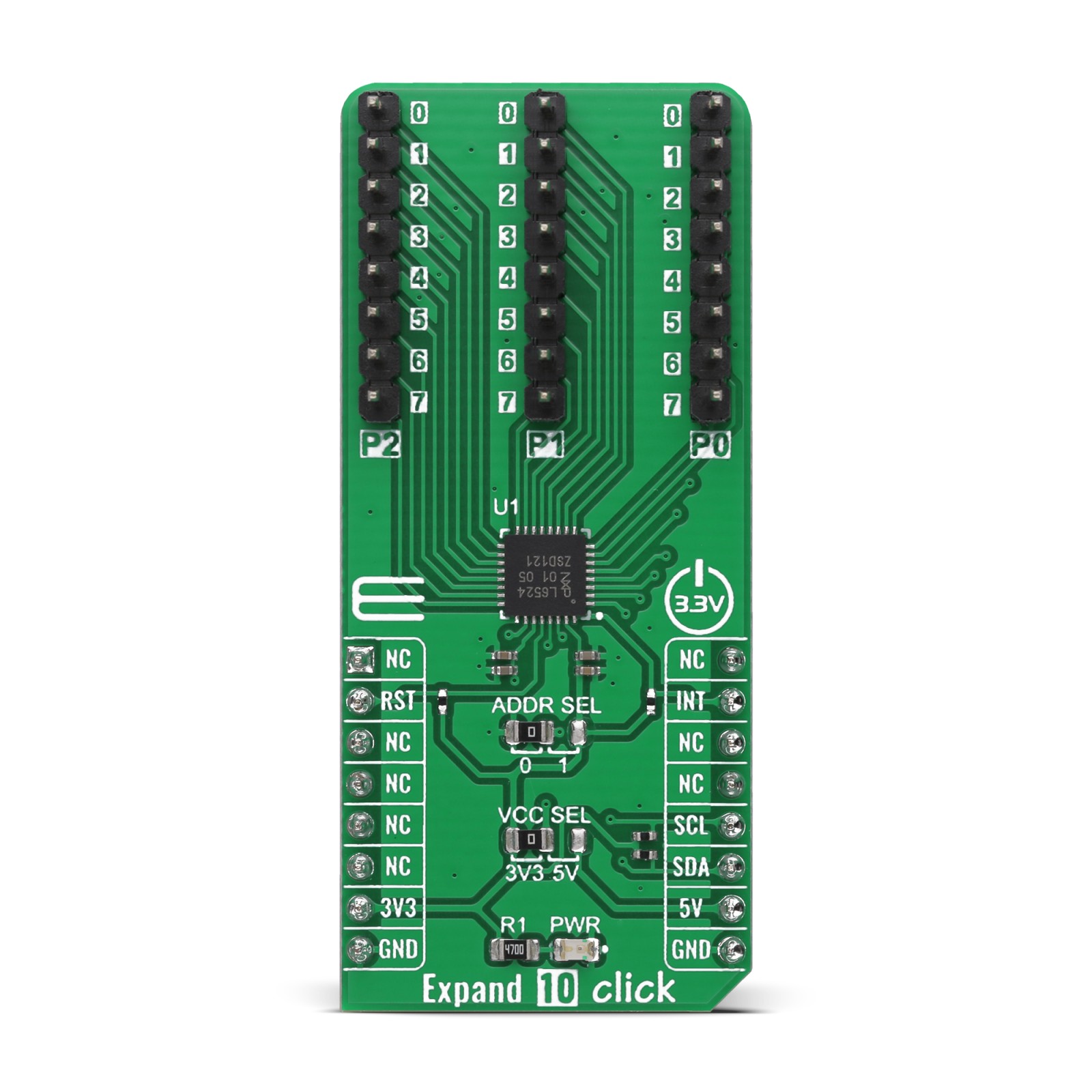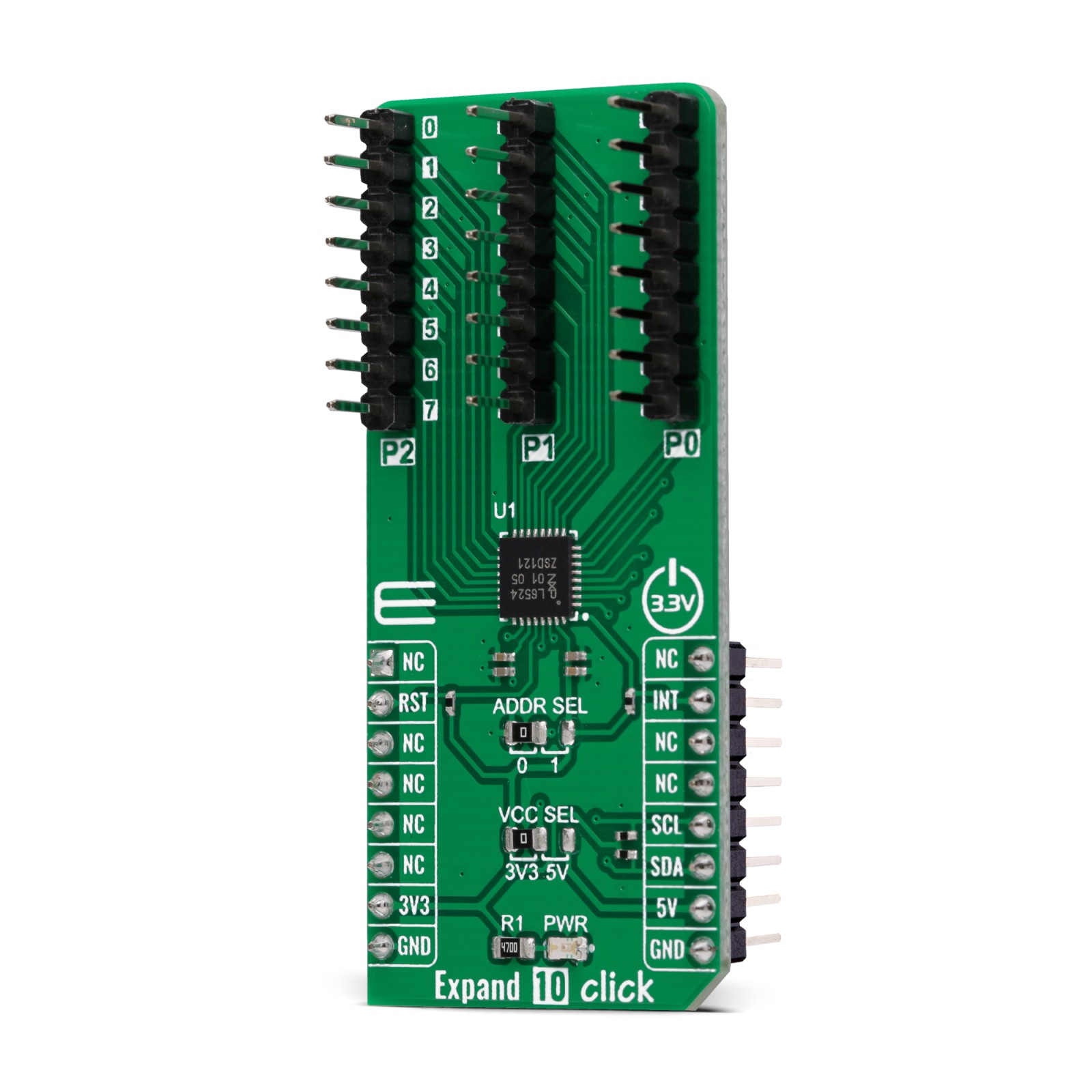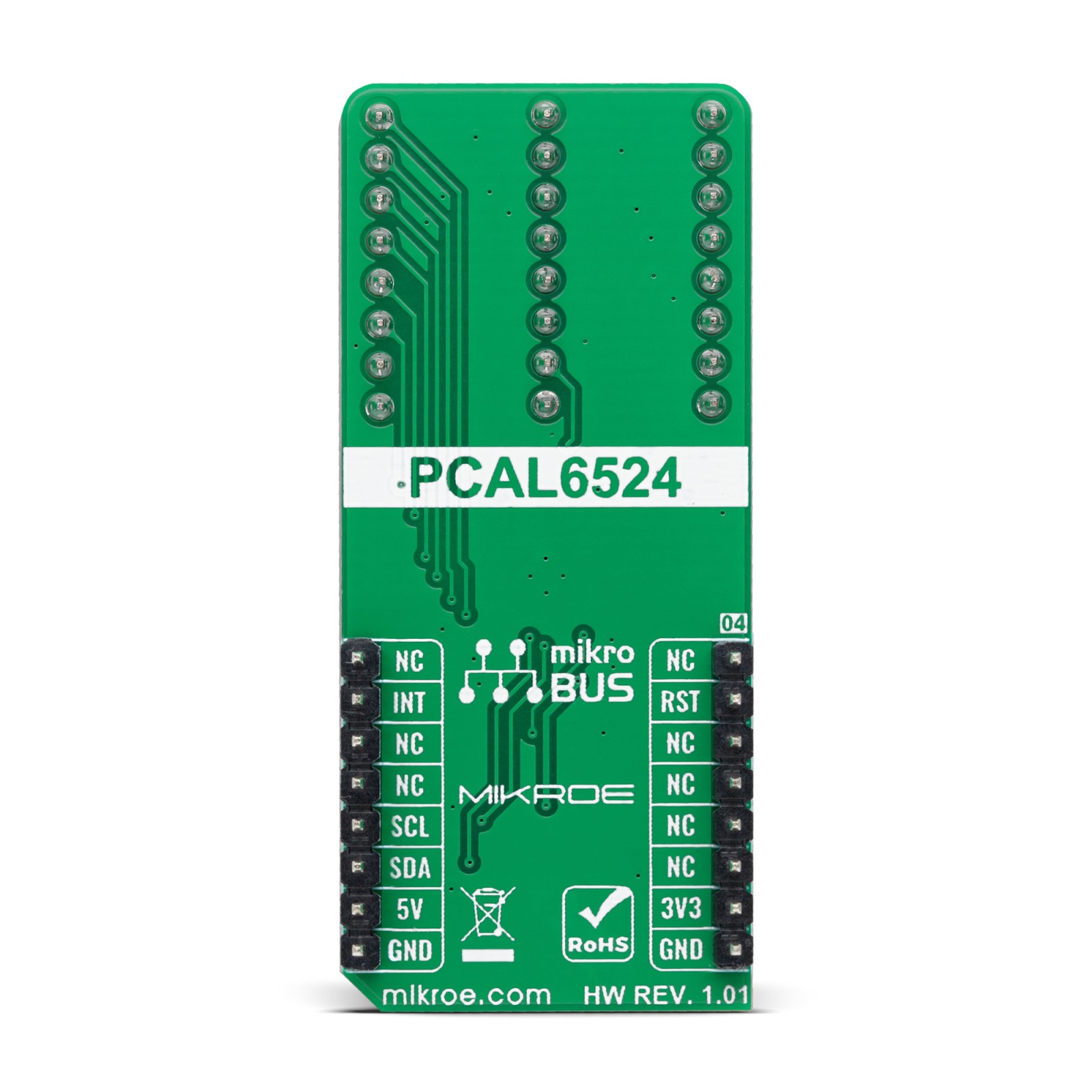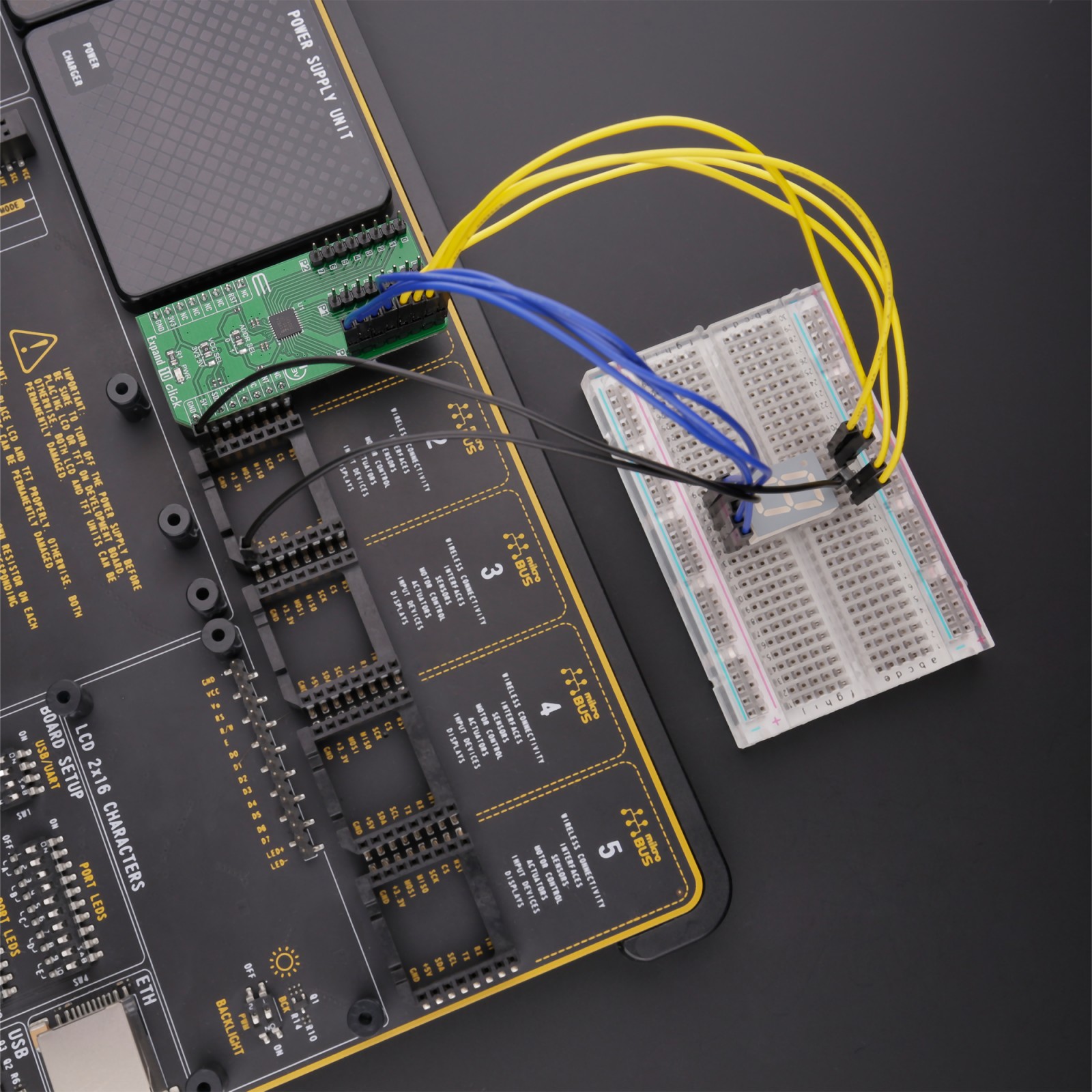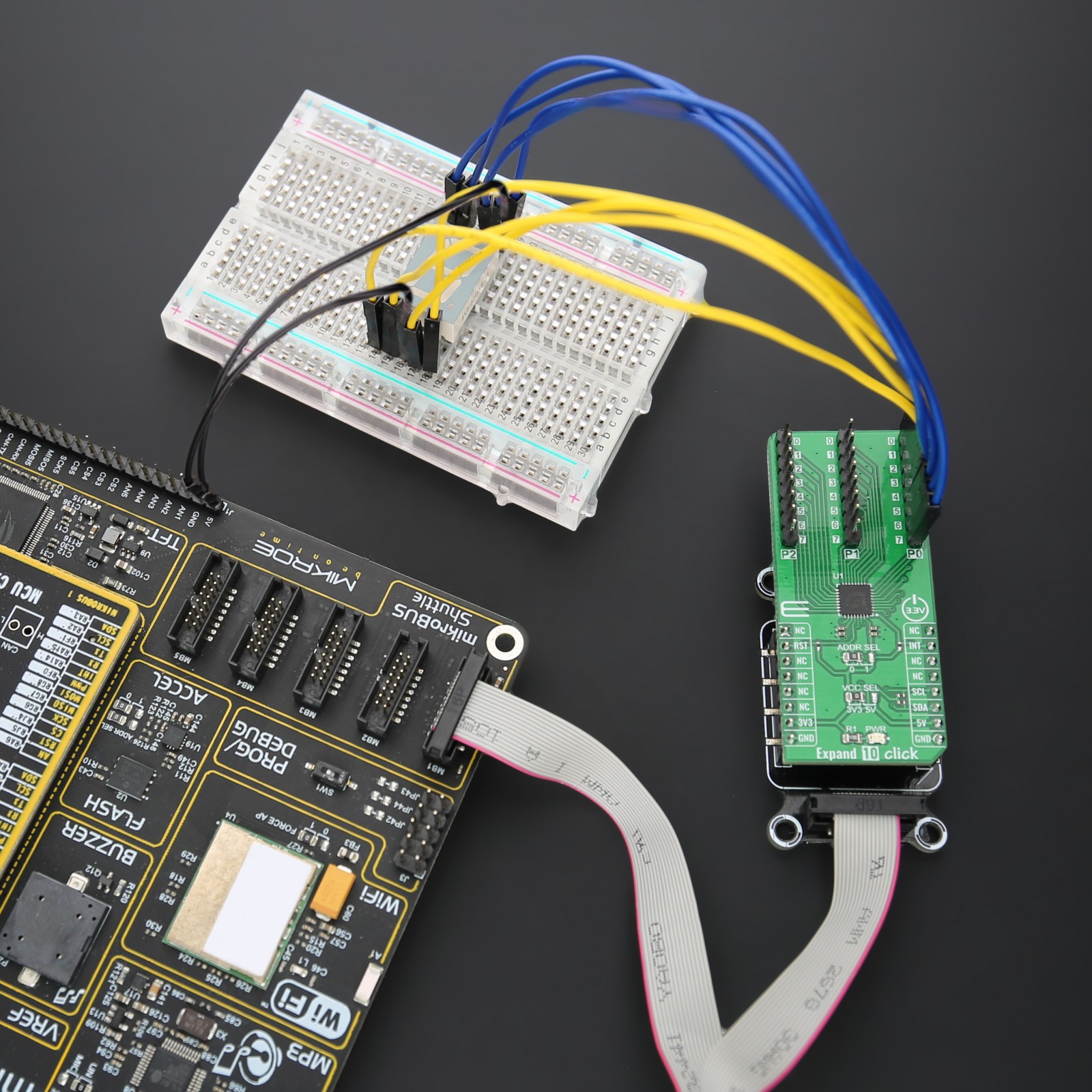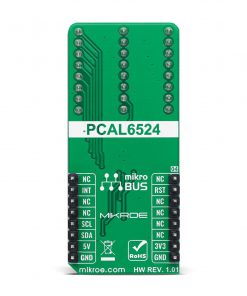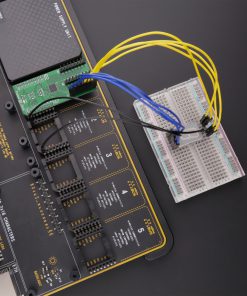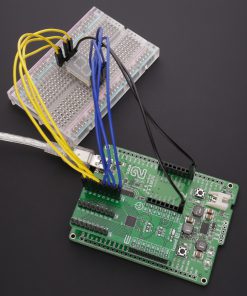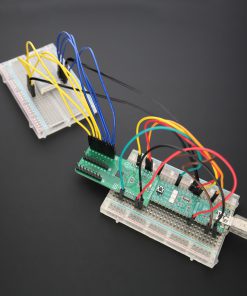Expand 10 Click
R335.00 ex. VAT
Expand 10 Click is a compact add-on board that contains a multi-port I/O expander. This board features the PCAL6524, a 24-bit general-purpose I/O expander providing remote I/O expansion for most MCU’s families via the Fast-mode Plus I2C-serial interface from NXP Semiconductors. The PCAL6524 has a built-in level shifting feature that makes it highly flexible in power supply systems where communication between incompatible I/O voltages is required. It allows seamless communications with next-generation low voltage microprocessors and microcontrollers on the interface and peripherals at a higher voltage on the port side. This Click board™ provides a simple solution when additional I/Os are needed while keeping interconnections to a minimum in system monitoring applications, industrial controllers, portable equipment, and many more.
Expand 10 Click is supported by a mikroSDK compliant library, which includes functions that simplify software development. This Click board™ comes as a fully tested product, ready to be used on a system equipped with the mikroBUS™ socket.
Stock: Lead-time applicable.
| 5+ | R318.25 |
| 10+ | R301.50 |
| 15+ | R284.75 |
| 20+ | R274.03 |

